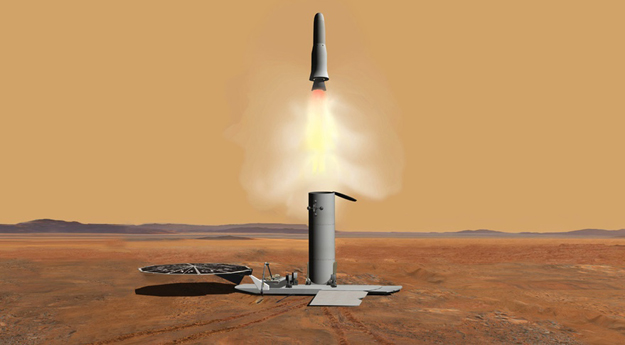Strategic Investments in Instrumentation and Facilities for Extraterrestrial Sample Curation and Analysis

NASA’s investment in new instruments to analyze extraterrestrial samples is insufficient to provide for replacement of existing instruments, says a new report from the National Academies of Sciences, Engineering, and Medicine. If NASA does not invest additional funds into the replacement of current instrumentation and development of new technologies, technical staff support, and training for the next generation of analysts, current capabilities cannot be sustained, and the full scientific impact afforded by returned samples might not be realized.
The United States possesses a treasure-trove of extraterrestrial samples brought to Earth by space missions over the past four decades. Today, there are two missions underway — JAXA’s Hayabusa2 and NASA’s OSIRIS-REx — that are expected to return samples in the 2020s from primitive asteroids, remnants from early in the formation of the solar system. Having the instrumentation, facilities, and qualified personnel to undertake analysis of returned samples, especially from missions that take up to a decade or longer from launch to return, is of paramount importance if NASA is to capitalize fully on the investment made in these missions.
“Planetary science may be entering a golden era of extraterrestrial sample return,” said Roberta Rudnick, chair of the committee that wrote the report and professor at the University of California, Santa Barbara. “Now is the time to assess how prepared the scientific community is to take advantage of these opportunities.”
Without changes in the funding program, currently robust analytical infrastructure for the study of extraterrestrial samples could suffer from attrition and the addition of new technological innovations could stretch current funding programs. The report recommends that the NASA Planetary Science Division place high priority on investment in analytical instrumentation and curation sufficient to provide for both replacement of existing capacity and development of new capabilities. This will maximize the benefit from the significant investment necessary to return samples for laboratory analysis from asteroids, comets, the moon, and eventually Mars and outer solar system moons.
No current missions include the return of extraterrestrial cryogenic materials, but efforts are underway to design missions that could, within the next few decades, return gases and eventually ice from Earth’s moon, comets, or the icy moons of outer planets. If one or more of these mission concepts is pursued, it could reap tremendous scientific advances. Samples returned would likely include gases, ice, and organic matter. Appropriate investments in the development of novel instrumentation and analytical techniques, specifically for curation as well as characterization and analysis of non-traditional samples, must start now because they will take decades to complete.
The Astromaterials Acquisition and Curation Office at NASA’s Johnson Space Center (JSC) is the world leader in curating and tracking returned samples. The impact of the JSC curatorial efforts go well beyond their immediate duties of curation, as they have been instrumental in helping to train the next generation of extraterrestrial materials scientists and to develop curatorial facilities at international partner institutions. The NASA Planetary Science Division should increase support for JSC to develop appropriate facilities necessary for future sample returns of organic matter, ice, and gases, says the report. The division should also accelerate planning for curation of returned Martian samples, seeking partnerships with other countries as appropriate.
The study was sponsored by NASA. The National Academies of Sciences, Engineering, and Medicine are private, nonprofit institutions that provide independent, objective analysis and advice to the nation to solve complex problems and inform public policy decisions related to science, technology, and medicine. They operate under an 1863 congressional charter to the National Academy of Sciences, signed by President Lincoln. For more information, visit nationalacademies.org.








